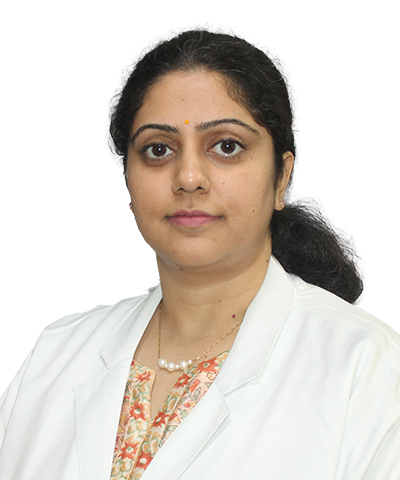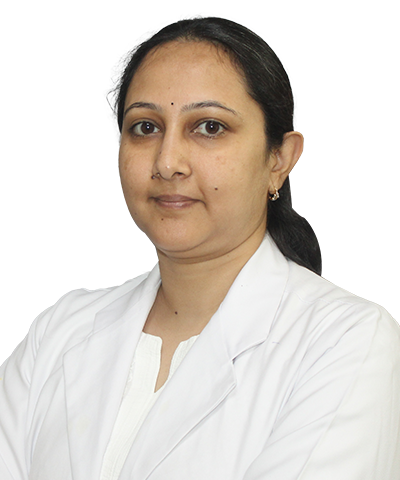Department of Biochemistry
The Biochemistry laboratory is functional 24x7 throughout the year. The Department is managed by a team of consultants who are highly experienced and accomplished in the field of biochemistry, quality, academics and research at national and international levels.
The laboratory is equipped with top–of-the-range, highly sophisticated fully automated random access analysers performing a wide range of routine and specialized tests. The quality assurance programme is robust, including a daily detailed internal quality control procedure and an International External Quality Assurance and evaluation for all parameters exhibiting excellent performance.
Tests’ Menu
The Department has validated/verified 145 individual parameters. Of these, several are specialized tests, e.g. hsTrop I, Homocysteine, Lead, Allergy tests, IL-6, HE 4, CA 125, AFP, PIVKA II, CA 19-9, CA15-3, Trace Minerals (Cu,Zn), Drugs of use, Antibiotics, Immunosuppressants, Vitamins, Hormones etc. In addition, there are 44 disease specific test profiles (Anemia profile, PCOD, Micronutrient, Diabetes, Renal profile, Hepatic profile, acute cardiac profile, trans-tubular potassium gradient(TTKG), Hyponatremia panel, Hepatocellular Carcinoma panel, Bone profile, Roma Score, etc). The composite list of tests along with their sample requirements and turnaround time is available in the Primary Sample Collection Manual (SGRH/QC/CLS/PSCM/03) on the hospital TrakCare in Quality documents (S. No 14).
Firsts of the department
- First laboratory in India to start estimation of homocysteine in 2000.
- First in Delhi to start estimation of ferritin, especially useful for follow-up of thalassemia patients (2002).
- First in North India to start estimation of the antifolate, methotrexate (2004), and the immunosuppressant, tacrolimus (2005) especially useful for follow-up of oncology and organ transplant patients.
- First in North India to start quantitative estimation of Procalcitonin for prognostication of patients requiring critical care and to differentiate between inflammation and culture-negative sepsis (2007).
- First in North India to start estimation of blood lead levels for assessing for lead poisoning (2013).
- First in North India to start estimation of total bile acids (2006), AMH (2013) and Active B12 (2015).
- First in India to start estimation of suPAR for prognostication of patients (2022)
Equipment
The equipment used are state of the art, random access and fully automated with high throughput and stat sample loading facility e.g. Abbott Alinity ci, Roche Cobas e801, Thermofisher, Phadia 200, Osmometer, BioRad Variant Turbo, Trinity. Centrifuges with digital monitoring, Deep freezer (- 80 and -20 C).
All auto-analyzers are bidirectionally interfaced to minimize errors and improve turnaround time.
Work Dynamics
The number of investigations performed in the department have increased every year due to increased sample load as well as introduction of new tests, especially special parameters of clinical relevance.
Risk Management
- In all the three phases of laboratory functioning - Pre analytical, Analytical and Post analytical, risk is evaluated and prevented by following the robust Risk Management Plan consisting of 3 basic steps- Risk Identification, Risk Assessment, and Risk Mitigation/Resolution. Some examples are double billing, delay in transportation.
- A software, Analyser Management System (AMS), has been installed for reflex testing and proactive QC evaluation in real time.
- Six monthly LIS (Laboratory Information System) verification is done as per the international standard for medical testing laboratories, ISO15189,for verifying the accuracy of data and transcription.
Non Conformance (NC) Identification: For all identified NCs in the entire process from test ordering to release of patient’s results, a root cause analysis (RCA) is performed followed by corrective and preventive action (CAPA).
Key Quality Indicators: Turnaround time, number of redo’s, IQC and EQA performance, critical value notification, all are monitored and evaluated on daily or monthly basis, as the case maybe.
Clinical Audit: Every quarter a clinical audit on different areas of functioning is performed and the data used for continual improvement and enhancement of patient care.
Departmental Meetings: Weekly meetings of department consultants and monthly meetings with technical staff are conducted and minutes of meetings are documented.
Academic Activities
1. Certification Course:
The Department conducts a GRIPMER Certificate Course titled
Total Laboratory Quality Management and Internal Auditor ISO 15189” with consultants of all sections of the Clinical Laboratory Services as faculty and Dr. Seema Bhargava as the Course Director. Details are available on the SGRH website.
2. Teaching And Trainings Given:
- Biochemistry Consultants of Khesar Gyalpo University of Medical
- Sciences, Thimpu, Bhutan are given training in Good Laboratory Practices.
- Consultants are actively involved in the teaching of DNB students. Also for MSc, BSc Biochemistry and Biotechnology Students during their internship.
- Consultants present cases in Clinico – Pathological Conferences of SGRH.
- Consultants and technical staff train BSc MLT/DMLT students during their internship.
- Dr.Seema Bhargava, Dr Anjali Manocha and Dr. Mamta Kankra are Faculty for Foundation for Quality India (FQI) for its courses on quality management as per ISO15189.
- Dr Mamta Kankra is a faculty for course in Diploma In Pediatric Allergy And Asthma (DPAA) - Allergy and its prevention.
- Dr Mamta Kankra is a faculty for Induction Training for introduction about Clinical Laboratory Services of new joinees in SGRH.
3. Academic Programs Conducted:
- National Conference: Department organized the 48th annual conference of the Association of Clinical Biochemists of India, ACBICON 2022, held at the ICAR Convention Center in New Delhi, India from 24th to 26th November, 2022. Clinically oriented state-of-the-art preconference workshops were held on the 22nd and 23rd of November, 2022. This was hosted under the auspices of two international academic partners International Federation of Clinical Chemistry and Laboratory Medicine (IFCC), and Asia Pacific Federation of Clinical Biochemistry (APFCB). Organizing team: Department of Biochemistry, Sir Ganga Ram Hospital (SGRH), under the able guidance and leadership of Prof. L. M. Srivastavaas Organizing Chairman, and Dr Seema Bhargava as organizing secretary.
The Chief Guest for the inauguration was Dr. V. K. Paul, Hon’ble Member, NITI Aayog, Government of India. The NITI Aayog serves as the apex public policy think tank of the Government of India. The Guest of Honour was Dr. Ajay Swaroop, Chairman, Board of Management, SGRH. The meeting was also presided over by the patrons of the conference, Dr. D.S. Rana, Chairman, Sir Ganga Ram Trust Society and Dr. S. P. Byotra, Director, Clinical Laboratory Services, SGRH.
- Annual CMEs: The Department of Biochemistry under the aegis of Delhi Chapter of the Association of Clinical Biochemists of India (ACBI), conducts annual CMEs every year.The 10th Annual CME titled “Therapeutic Drug Monitoring – The Right Test At The Right Time” was held on 16th of November, 2021 through virtual mode. The delegates included academicians and clinicians of our hospital as well as other reputed hospitals from all over the country and abroad.
Salient feature of our Annual CMEs has been –Prof L M Srivastava Gold Medal and Cash Prize which was instituted to encourage academic activities amongst young scientists. Students/Residents from all over the country are invited to submit their research work, out of which the best 10-20 projects are selected for oral presentation.
Annual Newsletter is published by the department which highlights the achievements of the consultants and the technical staff as well as provides information regarding new tests introduced. The examples of the first page of the last newsletter are reproduced for reference.
- Research Projects: 12 - The faculty of the department are involved in academic and research activities as principal investigators and co-investigators of extramural and intramural research projects, and co-supervisorsof theses of DNB/PhD.
- Publications: 16 - All research is published in international and national indexed journals.
- Books written –1
- Books edited - 1
- Chapters – 11
- Webinars/ Seminars Organized- 14
Faculty Achievements
- Dr. Seema Bhargava has been elected President of ACBI, our internationally affiliated oldest national association of biochemists for 2022-2023.
- Dr. Seema Bhargava has been awarded the Fellowships by the Royal College of Pathologists and ACBI.
- Dr. Seema Bhargava is the Chairperson of CAHO DD (Consortium of Accredited Healthcare Organizations – Diagnostic Division) since 2019.
- Dr. Seema Bhargava and Dr Anjali Manocha have been approved as PhD supervisors of Manipal Academy of Higher Education (MAHE).
- Dr. Anjali Manocha has been elected as Member, Executive Committee, ISAR-DC (Indian Society of Athersclerosis Research-Delhi Chapter) and Member, Executive Committee, AMBI (Association of Medical Biochemists of India).
- Dr. Mamta Kankra has been elected as Secretary, ACBI for 2022-2023. She also continues as the Delhi representative of ACBI since 2015.
- Dr. Seema Bhargava has been an elected member of the IFCC EBLM-C (Evidence Based Laboratory Medicine Committee of the IFCC) since 2019 and has been elected for a 2nd term up to 2024.
- Dr. Seema Bhargava, Dr Anjali Manocha and Dr. Mamta Kankra trained for Six Sigma and Quality Control by James O Westgard.
- Dr. Mamta Kankra has been elected as a corresponding member of IFCC EMD- C (Education & Management Division Committee of IFCC) for a 3 year period from 2022-2024.
- Dr. Mamta Kankra has been elected as National Champion by IFCC for a 3 year period from 2022-2024.
Members Of National And International Societies
All faculty of the department are members of National and International professional bodies like ACBI, ISAR, CAHO, IABS, AMBI, INSLAR, IFCC and APFCB.
Awards
- Dr. Seema Bhargava has received the “IMA NDB Award of Excellence” on 14th November, 2021.
- Dr Mamta Kankra has received the Pathology Annual Oration Award, 110th Founders Day, King George’s Medical University, Lucknow, U P on 08th January 2023.
- Department has received an Appreciation Award by Indian Society for Lead Awareness and Research at the 6th International LEADCON-2020 held at NIMHANS, Bengaluru in February, 2020.
Other Highlights
- First Department in SGRH to be sanctioned an ICMR project (2008).
- First Department of the Hospital to start a PhD program (2005) and the first PhD of SGRH was awarded to Dr. Seema Bhargava.
- The laboratory is the Referral Centre for Lead Testing- Delhi NCR Region since 2014.
- Dr Seema Bhargava , Dr Anjali Manocha, Dr Mamta Kankra: Lead and Technical Assessors for NABL and Dr. Parul Singla is Technical Assessor for NABL and Internal Councillor for NABH.
- Dr. Seema Bhargava: Member – DBT (Department of BioTechnology, New Delhi, India) Steering Committee.
- Dr. Seema Bhargava: Member – Instituitional Bio Safety Committee
- Dr Anjali Manocha Assessor for Entry Level Certification for NABH.
- Dr Anjali Manocha, Assessor for PT Providers by NABL.
- Dr Anjali Manocha did observorship in the clinical chemistry lab in the University Hospital Cleveland, Ohio, USA.
- Dr. Parul Singla is trained on Molecular Oncology Technique and Next-Generation Sequencing (NGS) from Rajiv Gandhi Cancer Institute and Research Center, New Delhi.
- Dr Anisha Sharma and Dr Reetika Saini are trained Internal auditors as per ISO 15189:2012.
- Ms Preeti Gumber, Sr Lab Technician is the BD National Phlebotomy Champion for the year 2022.
- Majority of the technical staff is also trained for ISO1589 to implement Good Laboratory Practices.
Future Planning
Installation of advanced track system to connect the auto analysers for higher throughput, more efficient testing, reduced pre analytical and analytical errors, improved accuracy, and reduced turnaround time.
Contact Information
+91 11 422 521 20
+91 11 422 521 22
+91 11 422 521 24
biochem.hod@sgrh.com
 Dr. Anjali Manocha
Dr. Anjali Manocha
 Dr. Mamta Kankra
Dr. Mamta Kankra
 Dr. Parul Singla
Dr. Parul Singla
 Dr. Anisha Sharma
Dr. Anisha Sharma
 Dr. Reetika Saini
Dr. Reetika Saini
 Dr. Seema Bhargava
Dr. Seema Bhargava